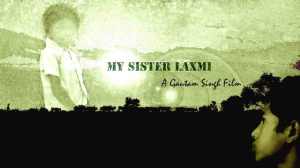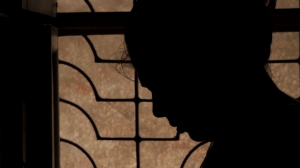Making a name for myself in Bollywood has been my childhood dream. I came to Mumbai in 2001 with that dream. Here I met thousands like me who had left their homes and families in search of success and stardom in the biggest film industry on Earth. But, for most, the quest leads to disappointment and sometimes…tragedy. From the day one in Mumbai I wanted to narrate the story of these people who work anonymously behind the scene dreaming of fame one day. As it happened, I moved to Doha, Qatar in 2007 and never got a chance to tell that story. However, in 2017, while I was directing/producing Gaon, I again met and lived with many of those dreamers and urge to narrate their story came back. Covid delayed the shoot for a couple of years, but finally it happened –
With a yearly revenue of over USD 2.7 billion, Bollywood is flourishing. Yet, the majority of its workers live and work in pitiable, highly insecure and unhygienic conditions. Most struggle to eke out a living and are denied of any basic human rights or dignity.
The struggle for survival is not exclusive to the film industry In India. Throughout the country, the fight for a half-decent wage is a constant reality; for the miners of Chhattisgarh to the workers of the Gujrat’s textile factories or the tea vendors on the sides of the roads. But, Bollywood has something no other industry has… the dreamers.
More films are produced in India than any other country in the world; almost 2,000 films each calendar year. By far dwarfing Hollywood’s output. As a culturally significant and prosperous industry it attracts thousands of aspiring artists, actors, dancers and technicians from across the country’s wide diaspora of cultures and multifaceted society.
Fewer than one percent of those who dream of making it big will even come close to achieving their goal. The vast majority of junior actors, background dancers, stuntmen, assistants, spot boys, light handlers, etc.… move from film to film, assignment to assignment. They have no job security, no benefits, no insurance. The pay is often paltry, delayed and at times there is no payment at all.
“the problem is that most people confuse Bollywood with a club of some 50-odd people who are always in the media focus, while the real people who slog are grossly neglected,” says Ankit Sharma, a 27-year-old junior actor.
It is an industry with overwhelming nepotism. Who you know carries a lot more weight than what you know. The situation for women can be even more desperate. They are often forced to exchange sex for work. While the children of celebrities are groomed for stardom and tailor-made debuts, outsiders have to fend off lecherous men and contend with a grueling routine of auditions and rejections.
Conversations with any ‘struggler’ is filled with; “I have a project in the pipeline” or “talks are happening”. There is a constant wait for the slightest sliver of a chance. Convinced that if only luck favoured them, they will be the next ‘big thing’.
Mukesh K Aggrahari, 33, a graduate with honours from Delhi University, has been a struggling actor for 11years. ‘My receding hairline doesn’t deter me,‘ he says. ‘By this time next year, God willing, I will have become a star’.



